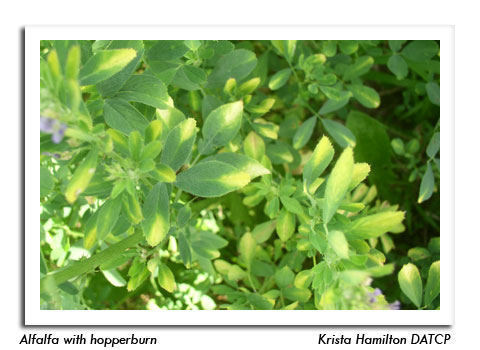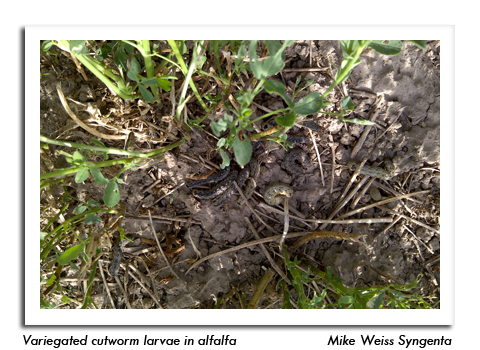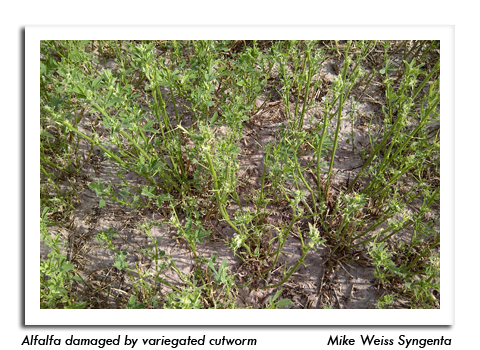
 |
|
|
Forages & Grains
Volume 57 Number 11 Date 06/21/2012 POTATO LEAFHOPPER - Counts have increased markedly in the past two weeks and are now above economic levels in many fields. Alfalfa acreage surveyed in Clark, Chippewa, Dane, Eau Claire, Pepin, Pierce, Polk, Portage, Rock, St. Croix, Waupaca and Waushara counties contained counts of 0.4-3.5 per sweep, with an average of 1.7 per sweep. Economic populations of 2.0-3.5 per sweep were noted in Chippewa, Polk, Waupaca and Waushara counties. Although treatment could be justified for these fields, early harvesting of the second crop is the preferred form of control. ALFALFA WEEVIL - A few late-stage larvae still remain, but most have pupated and new adults are appearing in sweep net collections. Larval populations in second crop alfalfa have been reduced to less than 0.3 per sweep and no further problems are anticipated this year. VARIEGATED CUTWORM - Larvae were found in 9 of 42 fields checked in the central, east-central and northwest districts during the period of June 14-19, although the problem is much more widespread. According to reports from county extension agents and consultants, economic larval populations have been observed in Barron, Clark, Fond du Lac, Grant, Green Lake, Manitowoc, Marathon and Winnebago counties, and likely many other areas. During outbreak situations, alfalfa regrowth is favored by the cutworms and should be monitored every few days for possible treatment needs. Control is suggested if the larvae are preventing regrowth and most of the cutworms are less than one inch in length. Larvae that are 1½ inches or longer are expected to pupate in a few days. PEA APHID - Surveys in the central and northwest counties found low numbers of 1-5 aphids per sweep. Populations have declined since late May when counts were as high as 29 per sweep in many fields. The average this week was less than 2 per sweep. --Krista Hamilton, DATCP Entomologist 




|
|
|